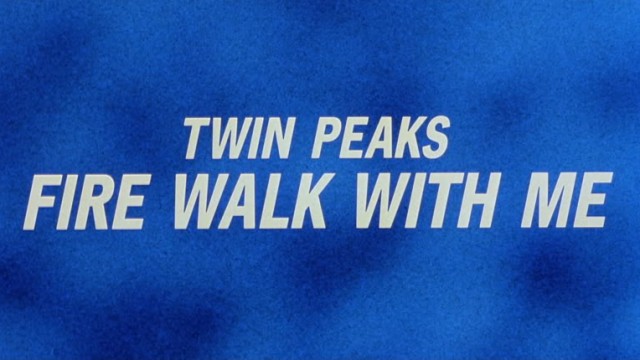When Twin Peaks: Fire Walk With Me was released in 1992, it was critically derided, ignored by the public, and otherwise declared as a failure of a film. Fire Walk With Me was a prequel film to a television show that had ended over a year ealier. Twin Peaks, the television show, would be released on VHS in Japan, and the European edition of the pilot was given a VHS release by Warner Bros, which included a more conclusive ending where Mike shoots Bob, who confessed to the murder.
This was before the era of TV shows were constantly released on home media a few months after their airing. Before streaming on your phone or computer made television shows Must See TV that happened on the day or never again. Before the era of DVRs where TV shows were easily recorded and saved for future dates months or years into the future.
At that time, there were only two ways that Fire Walk With Me was experienced. As a standalone film, and after having watched the whole series. Or, if you were an obsessive with the full VHS series from Japan that cost $440, you could experience the film differently. But, most people didn’t have that.
Both of those experiences are problematic at best. But, here I am proposing that there are four different placements of Fire Walk With Me, and that each placement has benefits, problems, and completely different meanings. The first, and most common, experience is to watch Fire Walk With Me after viewing the whole series. The second experience is to watch Fire Walk With Me as a standalone film without having seen Twin Peaks prior, and without watching the series after. The third experience is to watch Fire Walk With Me as a prequel, immediately preceding the pilot.
But, there’s a fourth placement. In my experience, this is the most fruitful placement. Someplace in the woods of the series, there is a perfect placement for Fire Walk With Me, and it is a glorious experience.
As a warning, since there are plenty of you that probably haven’t watched the show, there are spoilers within, as I will want to be dissecting the meanings of Fire Walk With Me within the context of the show.
Placement One: After the Series
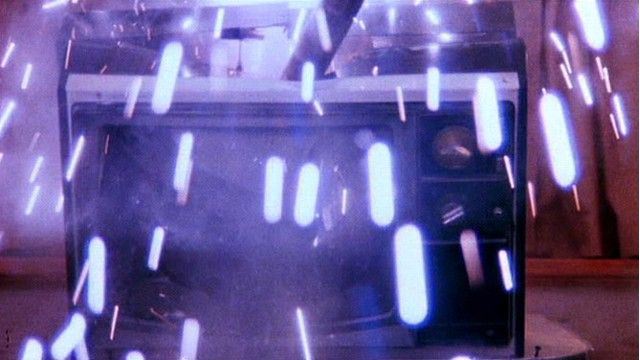
Twin Peaks opens with a mother discovering her daughter is missing. By the first commercial break, the body has washed ashore of the saw mill. That body is Laura Palmer. “Who killed Laura Palmer and why?” is the question that dominates all of the truncated first season, and half of the second season. I say half, but less than halfway through the second season, the mystery is solved, and the killer revealed.
In episode 9 of the second season, Lynch and Frost reveal the killer to be Leland Palmer, Laura’s dad, who had been possessed by Bob, a malevolent force which symbolized the evil that men do. This episode aired on December 1, 1990. The series still had 13 episodes left to go. Lynch and Frost, having been forced to reveal the identity of the killer, abandoned the show leaving it to continue on with the rest of its sundry, sorted, plot threads. Without the mystery of Laura’s death, the show immediately swerved into a slightly cracked version of Days of Our Lives with dead characters returning to town, former lovers coming in from other countries, main characters having full on affairs with other characters out of town, and a whole bunch of nonsense.
The show, 6 or 7+ episodes later, would finally pull out of its nose dive by introducing a revived rivalry between Agent Cooper and Windham Earle, and then leading further into the mysteries of the woods culminating in a trip to the Black Lodge, where Cooper loses a battle for his body and soul. But, the damage had been done, and the show had changed forever.
The slightly cracked tonality of the soap opera going-ons of the denizens of Twin Peaks took over the tonality of the show. In the second half of the second season of Twin Peaks, the show became more of an upbeat, slightly campy, zesty endeavor where people were being almost wacky and zany. If it wasn’t being campy, it was just being weird, almost for weird’s sake, with people being murdered in giant pawns and spelunking for clues to the Black Lodge. Then, the show ends with an extended romp in the Black Lodge where Lynchian weirdness finally takes over, and none of the plot threads are fully resolved.
I say all this to set the tone of the first placement. 20 months and 13 episodes AFTER Laura Palmer’s killer is revealed, David Lynch decided to return to the scene of the crime with the prequel Fire Walk With Me. Actually, Lynch did worse than that; for the first 40 minutes of Fire Walk With Me, David Lynch gives us a case surrounding another murder mentioned during the course of Twin Peaks, that of Teresa Banks. Teresa Banks is mentioned in relation to the murder of Laura Palmer, as it had many similarities, and Leo Johnson was in jail while Teresa Banks was murdered.
These first 40 minutes are set in Deer Meadow, OR, which is a broken parallel to Twin Peaks, WA. Teresa Banks lived alone in a trailer, compared to Laura Palmer living in a 2-story suburban-style house. Instead of the friendly, slightly psychic, Agent Cooper, we get the jaded, savvy, and direct Agent Chester Desmond. The cutting and experienced Albert Rosenfield is replaced by the extremely green, but observant, Sam Stanley. The friendly Double R, headed by the beautiful and friendly Norma, becomes Hap’s Diner, headed by the jaded and worn out Irene. Even the police department becomes antagonistic and sour.
To sum up, a year after Twin Peaks ended, David Lynch makes a movie that opens up with an alternate universe edition of Twin Peaks where everybody has gone stale and sour. This is not the show nor doesn’t it even involve anybody in the show, except at the very end when Agent Cooper visits Deer Meadow to investigate Agent Desmond’s disappearance. Everything here is very at odds, and this isn’t what you sign up for when you watch this after investing 30 episodes into the community.
But, after 40 minutes, we finally make it to Twin Peaks, WA, introduced with the iconic theme music. This time, the movie centers around Laura Palmer. For the next 85 minutes, David Lynch documents the final week of Laura Palmer, who was the missing soul of the first half of Twin Peaks and completely absent for the second half. To top it off, instead of being a mystery focused on “Who killed Laura Palmer?” we get “this is how Laura Palmer died.”
If you watch Fire Walk With Me after watching all 30 episodes of Twin Peaks, the questions and mysteries that the last half of Twin Peaks created and was not allowed to answer – Windham Earle, Annie’s Fate, Agent Cooper’s Fate, the Black Lodge, etc – are completely ignored. Instead, Fire Walk With Me revels in questions already answered. As such, the viewer here is irritated, bored, unsympathetic, and frustrated.
This is not the ideal placement to watch Fire Walk With Me. In fact, this may actually be the worst possible way to experience Fire Walk With Me, as all of the power within Fire Walk With Me is completely lost in the viewer’s frustration.
Placement Two: The Stand-Alone Film
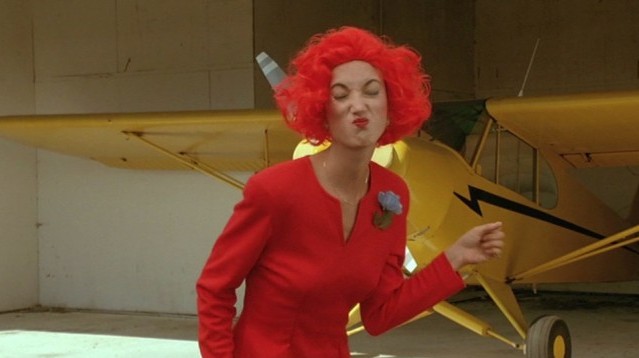
If Fire Walk With Me doesn’t add up as a sequel, a final episode, to the Twin Peaks series, then what about watching it completely devoid of the series? What about if you watch the film with no first hand experience of the show, and with no ability to watch the series itself? This is the other way one could experience Fire Walk With Me without having access to copies of the series on VHS.
David Lynch opens up Fire Walk With Me using a zoomed-in, abstracted, background of television blue and black static. Once the credits end, the camera zooms back to reveal the TV on which the static is playing, and an axe goes through the television as screams play over the soundtrack. Lynch simultaneously symbolically disassociated the movie from the television series, and tied it directly to the series. Lynch tells us that Fire Walk With Me is a movie that cannot exist without the television series, yet is still not the series.
So, what would Fire Walk With Me be like without any of the reference points that Twin Peaks gives to the regular viewer? Without having the ability to watch it on its own, I cannot tell you this. The closest I can come is watching it without going through the series anytime near the movie.
Watching Fire Walk With Me on its own is a harrowing, but disjointed, experience. The mystery of Teresa Banks, and the strange, dark, methy town of Deer Meadow takes on a more sinister feel to it, especially with the edginess of Harry Dean Stanton as the crank who runs the trailer park and Sandra Kinder as the chain smoker Irene running Hap’s Diner. The blood red lettering thrown over the walls of the diner is ominous and spooky in a simple abstract way and creates the sense of dread that isn’t present in the Double R.
When watching Fire Walk With Me devoid of the series, Teresa Banks becomes a mystery that the viewer becomes completely invested in. The disappearance of Chester Desmond becomes emphasized, even though Lynch completely drops that mystery. That both of these plots are essentially dropped and never really concluded within the context of the film makes the movie a frustrating experience as you almost wonder why we spent a full act on somebody who becomes a secondary but important character in the life of Laura Palmer.
The transition from Teresa Banks to Laura Palmer is handled with almost no grace. As soon as Chester Desmond disappears, Lynch provides an interstitial scene with David Bowie talking about how we’re not going to talk about Judy, before disappearing in a freakout of camerawork. OK, what was that? Agent Phillip Jeffries, Bowie’s character, rambles incoherently about the future, and was intended to set up a bunch of plot lines for development had the franchise continued on. But, because Fire Walk With Me was essentially dumped by the distributor, this scene has remained a mystery.
By the time the transitioning from Teresa Banks to Laura Palmer through the various antics of the FBI is finished, we’re about ready to give up on the movie. This feeling dissipates as Lynch finally stays on Laura Palmer’s last days alive. But, the added focus on Teresa Banks adds to the tension of the moments when Leland Palmer remembers killing Teresa Banks because he was seeing her as a prostitute when she invited Laura to join in.
The nature of Laura’s last days becomes completely harrowing and the deeper meaning of Leland Palmer’s relationship to Teresa Banks is increased. Watching it independent of the series (though having the experience of the series) is important to fully grasping the weighty gravitas and pathos that David Lynch injected into Fire Walk With Me. Watching it here is the only way that you begin to fully weigh Teresa Banks’ murder, which doesn’t fully devolve into a seeming afterthought, which it very much is not.
Placement Three: Before Watching the Series
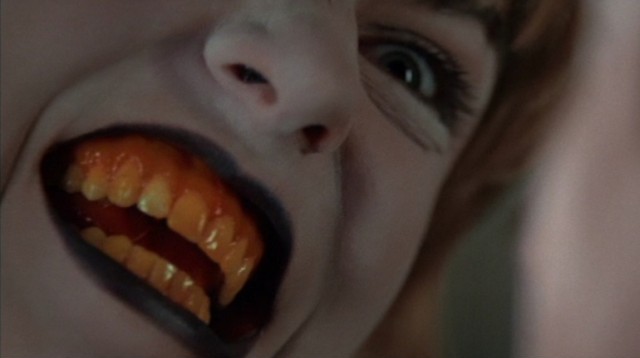
Watching Fire Walk With Me immediately before watching the series, as a pre-pilot episode, dramatically and irrevocably changes the tonality of the series, especially the pilot.
As mentioned, the last 90 minutes of Fire Walk With Me details the last few days of Laura Palmer’s life. But, those last few days were filled with sorrow, angst, drugs, sex, and a teenage girl trying to scream for help with a community that wouldn’t listen.
With Fire Walk With Me, David Lynch doesn’t so much rub your face in the dirt and grime of Laura Palmer’s life, but screams, “How dare you abstract this death of a teenage victim!” Even though Twin Peaks opens with Laura Palmer’s dead body floating ashore, the show largely deals with the emotional hole she left in the community, and the various ways the community covered its tracks in order to seem wholesome. The death of Laura Palmer becomes more of a game than a reality, as we never fully grasp the full reality of her death. Fire Walk With Me throws the pilot, especially, into sharp relief.
Spending 90 minutes wallowing in her death, the cheeriness of the first segment just seems so wrong and raw. Suddenly, the seeming happiness of the kids at school seem like an affront to Laura’s memory. Her mother’s average frustration seems mild to the horror Mrs. Palmer displays in the film when Leland violates Laura physically and emotionally at the dinner table.
Even James is erroneously cheery at the beginning of the pilot, since Laura had run away from him mere hours before. Though, this mood is even erroneous in the context of the pilot, since, by the end of the pilot, James admits to Laura having run away from him.
The pleasantness of the town becomes an affront to the suffering of this precious, intelligent, disturbed girl. Why is nobody recognizing she was a molested girl? Why is nobody recognizing that she needs help? Why didn’t people ask her what was actually wrong? Why are people so willing to cover up in order to not deal with each other’s trauma?
The funeral in Episode 4 takes on new meaning and depth when Fire Walk With Me is watched before the pilot. Without Fire Walk With Me, you believe that the priest is correct in emotionally analyzing Laura Palmer’s surface life as a beautiful, charming, intelligent do-gooder. Without Fire Walk With Me, Bobby’s outrage just seems like misplaced aggression aimed at making everybody as miserable as he does. And, the final segments of Leland Palmer throwing himself on the coffin with Mrs. Palmer screaming at him “Don’t you ruin this too!” just seems like a heightened grief of zaniness that might be par for Twin Peaks.
With Fire Walk With Me, suddenly everything flips. When the priest is making his eulogy, it sounds like mere placation to the bereaved. His eulogy becomes empty words meant to soothe people. Bobby’s speech calling everybody hypocrites because they should have recognized Laura was in trouble but nobody helped her becomes truth telling and completely responsible and honest. But, even more especially, Mrs. Palmer screaming at Leland becomes a telling clue when she has the word “too” in her sentence.
Besides the funeral, the jarring tonal shift between Fire Walk With Me and the daily life of Twin Peaks makes Laura’s abuse in Fire Walk With Me that much more tragic and useless, as Lynch forces every decision the police and Agent Cooper makes fraught with tragedy and error. As a prequel, Fire Walk With Me exposes the sadness that underlies all of the first half of Twin Peaks. But, this still isn’t the best position for Fire Walk With Me, because the full emotional weight of Laura’s murder isn’t filled with the anticipation of the ending, as Lynch used with beautiful skill.
Placement Four: After The Reveal
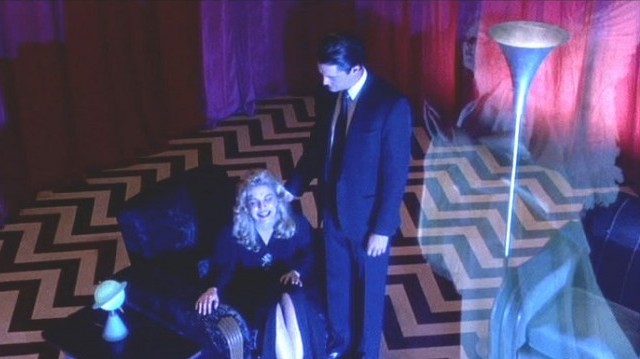
Watching Fire Walk With Me after the reveal halfway through Season 2 is where shit really gets real.
After watching somewhere over 15 hours of Laura Palmer being dealt with as an abstraction, and countless red herrings and emotional understandings, David Lynch and Mark Frost pull out all the stops to reveal Leland Palmer is Laura Palmer’s killer and molester. They don’t just reveal this truth to the audience, but they also reveal this truth to Leland Palmer himself. Leland comes to the realization of everything he does, and essentially kills himself. Or, Bob kills him, but Bob was possessing Leland. With a lot of drama and gravitas, this is finally revealed in a form that maximizes the rawness of the reveal. The reveal of not just incest but also filicide magnifies the horror of the events that happened.
Watching Fire Walk With Me immediately following the reveal magnifies the horror held within Fire Walk With Me to a degree that really hasn’t been reached with any other placement of the movie.
When you first see Laura Palmer in Fire Walk With Me, suddenly the viewer is filled with dread. The viewer knows the ending to this movie. The viewer knows that Laura Palmer ends up dead in a train car, killed by her father. The viewer knows she was repeatedly raped by her father for years, even as she blocked out that memory to replace Leland with Bob. The viewer suddenly is thrown into this horrifying situation where you’re finally in the mind of this girl who has been raped by her father, but hasn’t even begun to deal with it.
Suddenly, all of Laura’s actions in Fire Walk With Me take on a primal scream they don’t have otherwise. When Laura takes cocaine, it takes on even more desperation as she’s escaping the horror of her home life. The bondage, S&M and control games that she plays with Leo Johnson and Jacques Renaud take on a therapeutic edge to them, and become even more sinister when she screams that she doesn’t want to be tied up that night.
When Laura finally sees Leland as Bob outside the house, you feel for her. You recognize that she is finally beginning to deal with her repression of her trauma. Laura is now a severely damaged girl. When the angel disappears from her painting in her room, it takes on a harrowing tone that it rarely has before. When Laura is laughing/crying/screaming at the end, you’re doing the same as you’re just witnessed Laura’s rape and murder, but realize that she’s moving on to a better place because she won’t take on the next possession of Bob.
The 10 minute long droning sequence in the bar immediately preceding Laura’s death takes on an even more harrowing tone as you realize just how deep into her shit she is. And, when Laura screams at Donna as Donna begins to enjoy the deviant sexuality of drugs and prostitution, that’s when Laura communicates that she just realized that she has a bit of Bob in her too. She drugged Donna because Donna wanted to take part in her activities. And, now she has regrets.
The whole first act of Fire Walk With Me with Teresa Banks just serves to increase the anticipatory dread of the second and third acts. The down, dirty, doomed nature of Deer Meadow accentuates the differences between Twin Peaks of the series, and Twin Peaks of the movie. Lynch is forcing us to descend down the hole with him. Like Laura, we’re already emotionally raw and exhausted from the trauma we just witnessed. We’re in her shoes and so we feel Laura’s depths so much more.
Additionally, the mysteries of the Black Lodge, and the presence of Annie in the nightmare, fill the next few episodes with more interest as you wonder why these people were in the movie, and how they got to where they were. Much like the stories of Phillip Jeffries, they haven’t been tied in to the series in previous episodes, except, in these cases, the answers will be revealed in the coming episodes…you know, once you get past bullshit like James’ fucking affair.
There is no single way to watch Fire Walk With Me without losing or gaining something in the process. The absolute worst way to watch Fire Walk With Me was the only was one could have possibly experienced it the first time around. The way that David Lynch forces you to consider the damage of incest and rape is particularly dissonant when played with the rest of the series.
To fully experience the depths of Fire Walk With Me, at least 3 viewings should be required: After the second season reveal of Leland Palmer, on its own completely separate from the series, and just before going through the series again. It is only through these various placements of Fire Walk With Me that we see just how complex and emotionally rich and realized the world of Twin Peaks actually is.
I hope that, through this extremely long essay, I have communicated that Fire Walk With Me is not irreparably damaged. I believe that there are layers upon layers of complexity that David Lynch is communicating between the television show and the film, and that these two entities are perfectly symbiotic in their emotional toll.

